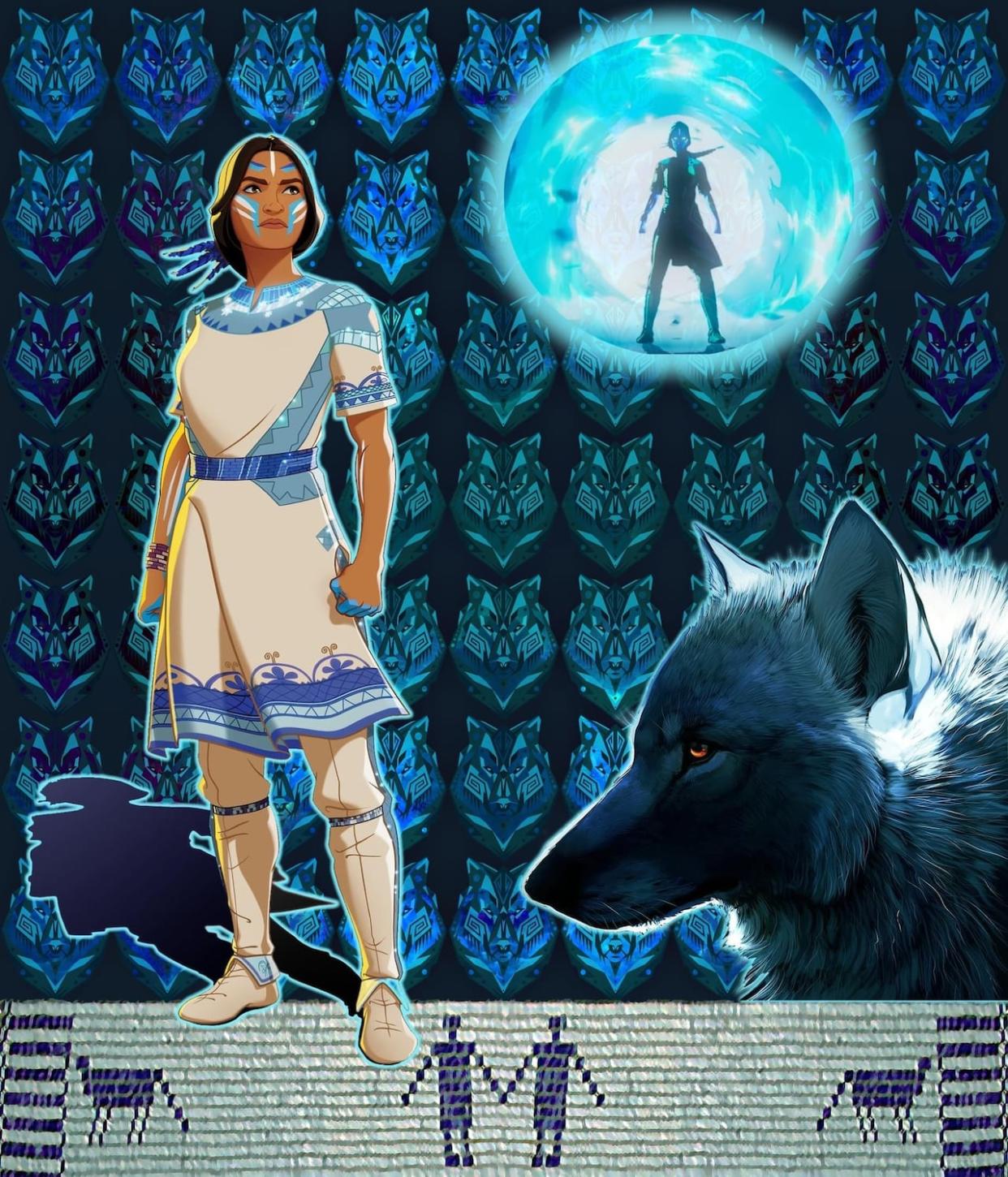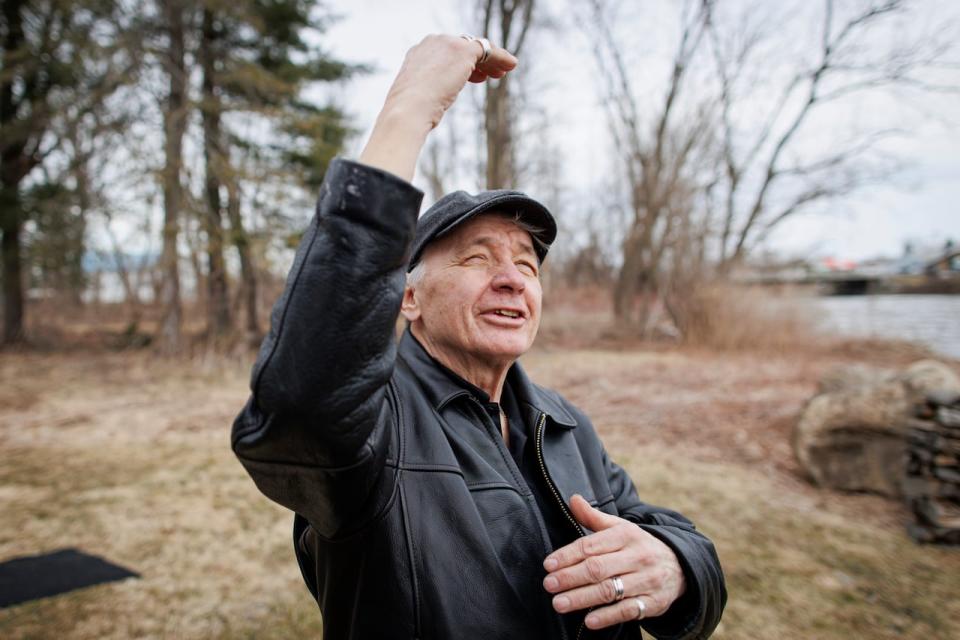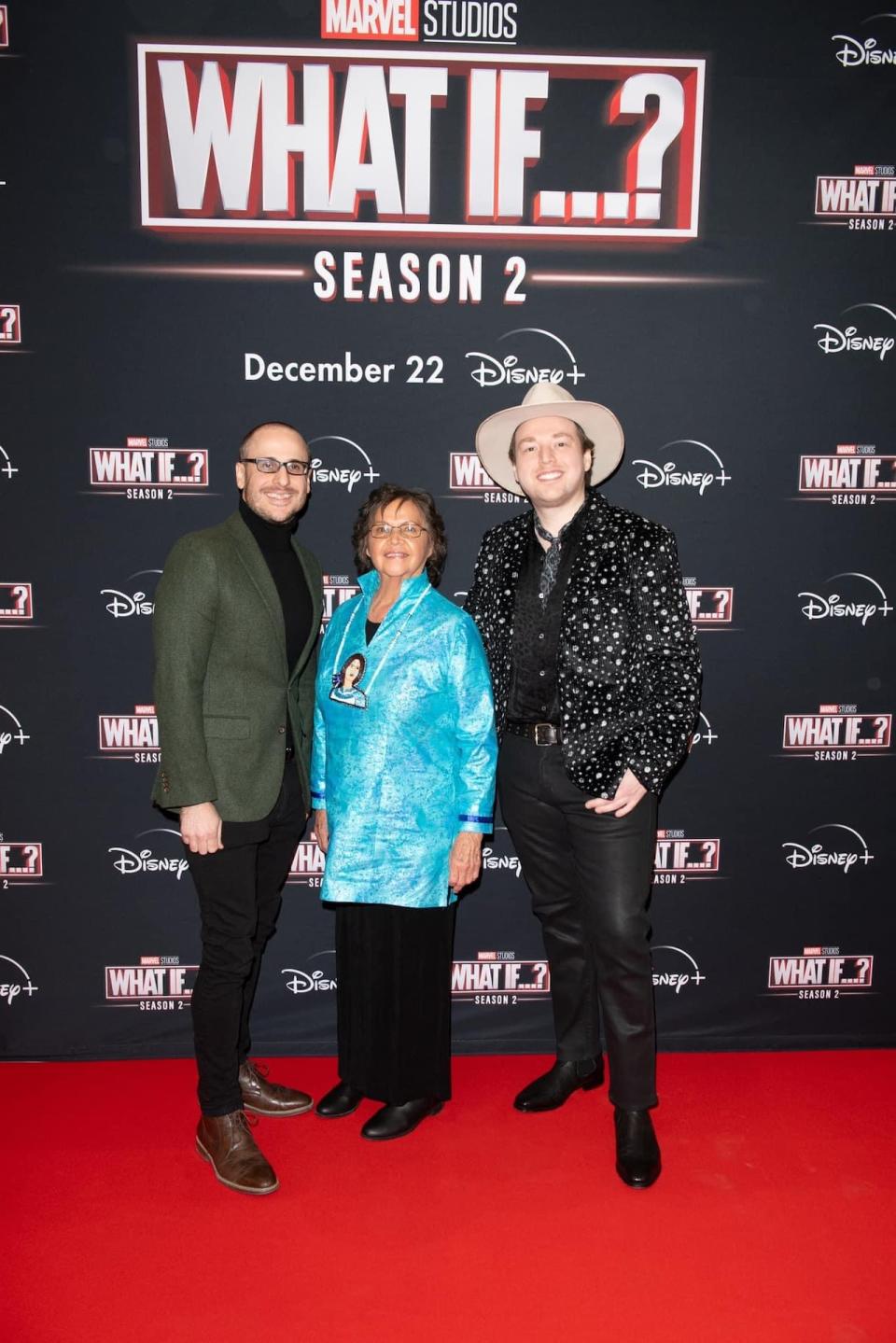Akwesasne ties run deep in Marvel superhero series episode

- Oops!Something went wrong.Please try again later.
When Doug George-Kanentiio heard his late wife's voice ringing out on a recent Marvel superhero series, he was overwhelmed.
"It was very moving. We'd been married for 30 years," said the writer and journalist from Akwesasne, a Kanienkehà:ka (Mohawk) community near Cornwall, Ont., that straddles the Ontario, Quebec and New York borders.
"To see and hear that — oh man, it's almost too much for me to even talk about."
George-Kanentiio and his wife Joanne Shenandoah, an acclaimed Grammy-winning musician from the Oneida Nation who died in 2021, were instrumental in creating the superhero character Kahhori for an episode of the animated Marvel series What If…?.
The series delves into alternate reality versions of the Marvel universe. In the episode What If... Kahhori Reshaped the World?, the power-bestowing Tesseract falls to Earth and lands in the territory of the Haudenosaunee Confederacy just as European colonizers show up.
It's a rare half-hour of television where Kanien'kéha (the Mohawk language) is heard throughout, with Kahhori and other Indigenous characters all speaking it.
Kahhori also strongly resembles a younger Shenandoah, whose music is woven throughout the episode.
"What we wanted to show, what was so important to me personally, was the integrity of Native music, the power in our voices," George-Kanentiio told CBC Radio's All In A Day.
"And when Marvel said, OK, we'll do this, that's what kept Joanne going, even though she was very physically ill in the last few months of her life."
Language 'imperilled'
George-Kanentiio and Shenandoah worked closely with writer Ryan Little to craft the episode, which began streaming on Disney Plus in December.
"There was a little bit of hesitation on our part, because media has not been kind to Indigenous people," George-Kanentiio said.
"But Ryan had a different approach to it entirely. He would work with us. He would respect our heritage, our stories."

Doug George-Kanentiio, seen here in Akwesasne last April, served as a consultant with his late wife, musician Joanne Shenandoah, for the Kanien'kéha-language episode. (Evan Mitsui/CBC)
It all took about four years to put together, Little told All In A Day — a "ridiculously long time" in the world of television.
Part of the goal, he said, was to "elevate" the Kanienkehà:ka community, something he felt couldn't be done without putting their language front and centre.
"You learn so fast about all the resilience and all the work that's been done to maintain their culture, to keep their heads high, to live with dignity and honour," he said.
"Very quickly [it turns] to conversations about the language — the language that, just 50 or 60 years ago, was imperilled."
With just a few thousand speakers who grew up with the language, however, Kanien'kéha remains in peril in the eyes of the United Nations, which has classified it as an endangered language.
According to 2021 census data, only about 1,400 people in Canada said they could speak Kanien'kéha, although Statistics Canada notes the language is "primarily associated with incompletely enumerated reserves and settlements."

Cecelia King, centre, worked as translator on the episode, which began streaming on Disney Plus in December. (Submitted by Jeremy White)
Hearing Kanien'kéha was 'astounding'
The episode's Akwesasne connections are strong, with local longtime Kanien'kéha teacher Cecelia King also providing the translations.
For King, who was asked by Shenandoah to work on the project, hearing Kanien'kéha on screen was "awesome" — and something she hoped could spark interest in the language among younger viewers.
"When I saw [the episode] I realized right then that the young children are loving this so much. I think it's going to be easier to teach them the language," she told All In A Day.
"I've heard about children copying and saying the words [in the episode]."
George-Kanentiio said hearing Kanien'kéha on screen was something he'd experienced just once before: on the classic television series The Lone Ranger, in brief interjections from the hero's companion Tonto.
"I think it's absolutely astounding. It's revolutionary," he said of the Marvel episode. "It's never been tried before in any media that I know of."

